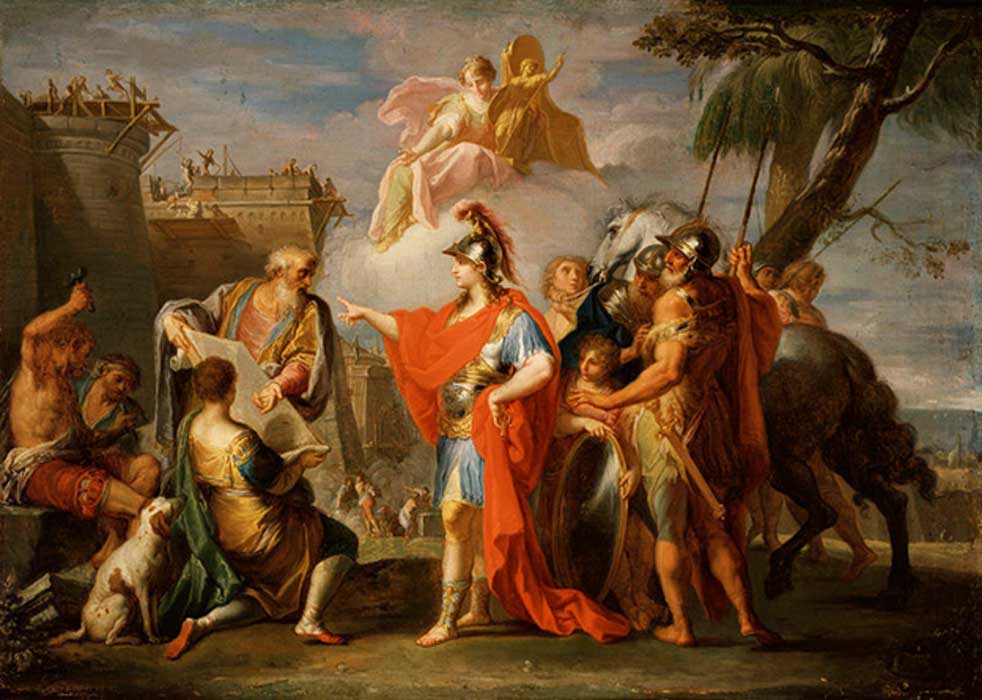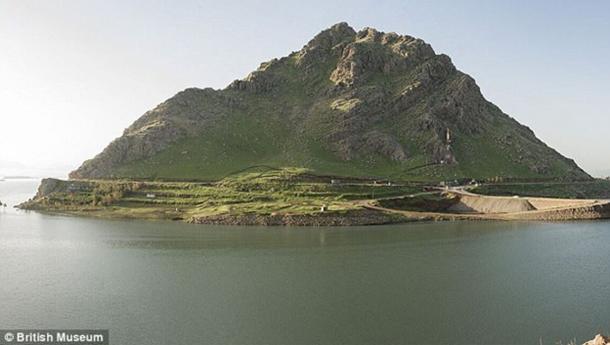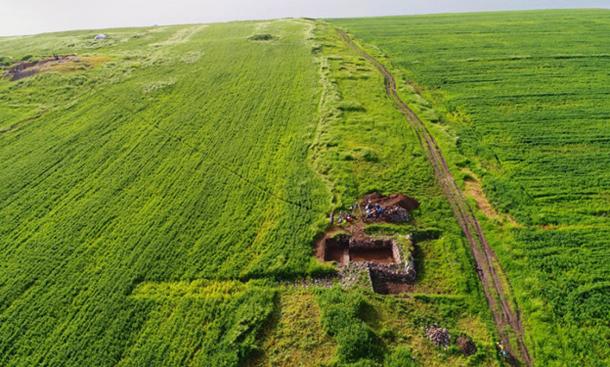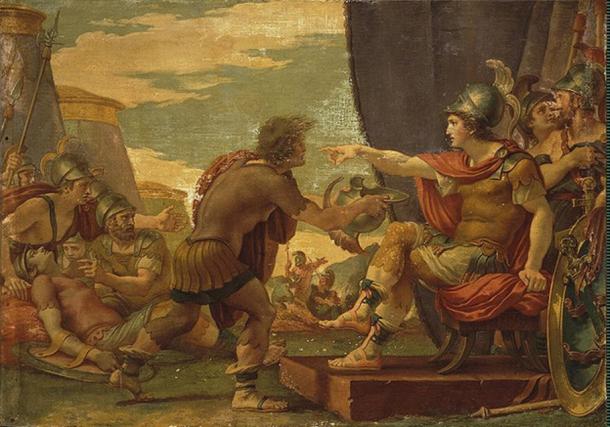Post by Mad Scientist on Oct 1, 2017 6:23:33 GMT
Lost City Believed Founded by Alexander the Great Discovered in Iraq.

An ancient city considered to have been founded during the reign of Alexander the Great has been discovered in Iraq, after hiding under tons of sand for more than 2,000 years. The discovery was made by a team of archaeologists from the British Museum.
Alexander the Great’s “Lost City” Discovered with the Help of Drones
Qalatga Darband, which overlooks a river in the Sulaimaniya province of Iraqi Kurdistan, bears the traces of an ancient fortified settlement, and now archaeologists from the British Museum have finally “invaded” this long-hidden area as The Times reports. Satellite spy photography captured in the 1960s by the American government during the Cold War, helped researchers to identify the outline of suspected ancient remains from the air back in the 1990s. War in the region, however, prevented archaeologists from taking a closer look until the 21st century.

The remains of the settlement were eventually identified by the experts with the help of drones equipped with cameras. "The drone yielded excellent information,” lead archaeologist John MacGinnis from the British Museum told The Times. And added, "We got coverage of all the site using the drone in the spring – analyzing crop marks hasn't been done at all in Mesopotamian archaeology. Where there are walls underground, the wheat and barley don't grow so well, so there are color differences in the crop growth." So far examination on the ground has uncovered the foundations of several large buildings in the ground, including a fortified wall and stone presses that may have been used in wine or oil production.

Alexander's City Foundations
Even though nothing is certain or verified yet and there have been no finds yet that pin the site to the all so fleeting time of Alexander, the archaeologists suggest the city was built on a route the undefeated Greek king took in 331 BC while pursuing Persian King Darius III, who was fleeing from his defeat at the Battle of Gaugamela. It is believed that Alexander the Great's “lost city” was a vivid town with an intense lifestyle where Alexander’s soldiers drank wine and Greek philosophers spread their wisdom. "It's early days, but we think it would have been a bustling city on a road from Iraq to Iran. You can imagine people supplying wine to soldiers passing through," MacGinnis told The Times.
In a span of just 13 years from 336 to 323 BC, Alexander the Great pushed the boundaries of his Macedonian Kingdom out of its Greek center as far south as Egypt and as far east as India. Along the way as he conquered region after region, he founded a series of cities which he named for himself. Alexander's biographer Plutarch of Chaeronea states that Alexander the Great founded no less than seventy towns (this number probably includes pre-existing settlements renamed and/or repopulated by Alexander), which were important centers of the Greek culture in the East.

These cities would generally serve as places to settle the many thousands of veterans that had followed the Greek king across the Middle East and into South Asia. Many of these Alexandrias persist today: some with different names, some retaining versions of their original name. Other Alexandrias are long since passed, and still others have been lost to history.
Findings Include Ancient Greek Statues of Persephone and Adonis
The excavation work at the site has also uncovered roof tiles and ancient Greek statues, with archaeologists suggesting that they portray divine figures of Greek mythology such as Persephone and Adonis. The specific age of these statues hasn’t been determined yet, but the team speculates they date back to the first or second centuries BC. Furthermore, a coin that was found in the city depicts the Parthian king Orodes II (who ruled from 57 to 37 BC), a fact that makes archaeologists believe that the city was used for many years after the reign of Alexander the Great. Researchers intend to continue their excavation works until 2020, in hope to discover more things that will shed light on the “lost city’s” secrets and perhaps confirm that it was indeed developed by Alexander.
Source.


An ancient city considered to have been founded during the reign of Alexander the Great has been discovered in Iraq, after hiding under tons of sand for more than 2,000 years. The discovery was made by a team of archaeologists from the British Museum.
Alexander the Great’s “Lost City” Discovered with the Help of Drones
Qalatga Darband, which overlooks a river in the Sulaimaniya province of Iraqi Kurdistan, bears the traces of an ancient fortified settlement, and now archaeologists from the British Museum have finally “invaded” this long-hidden area as The Times reports. Satellite spy photography captured in the 1960s by the American government during the Cold War, helped researchers to identify the outline of suspected ancient remains from the air back in the 1990s. War in the region, however, prevented archaeologists from taking a closer look until the 21st century.

The remains of the settlement were eventually identified by the experts with the help of drones equipped with cameras. "The drone yielded excellent information,” lead archaeologist John MacGinnis from the British Museum told The Times. And added, "We got coverage of all the site using the drone in the spring – analyzing crop marks hasn't been done at all in Mesopotamian archaeology. Where there are walls underground, the wheat and barley don't grow so well, so there are color differences in the crop growth." So far examination on the ground has uncovered the foundations of several large buildings in the ground, including a fortified wall and stone presses that may have been used in wine or oil production.

Alexander's City Foundations
Even though nothing is certain or verified yet and there have been no finds yet that pin the site to the all so fleeting time of Alexander, the archaeologists suggest the city was built on a route the undefeated Greek king took in 331 BC while pursuing Persian King Darius III, who was fleeing from his defeat at the Battle of Gaugamela. It is believed that Alexander the Great's “lost city” was a vivid town with an intense lifestyle where Alexander’s soldiers drank wine and Greek philosophers spread their wisdom. "It's early days, but we think it would have been a bustling city on a road from Iraq to Iran. You can imagine people supplying wine to soldiers passing through," MacGinnis told The Times.
In a span of just 13 years from 336 to 323 BC, Alexander the Great pushed the boundaries of his Macedonian Kingdom out of its Greek center as far south as Egypt and as far east as India. Along the way as he conquered region after region, he founded a series of cities which he named for himself. Alexander's biographer Plutarch of Chaeronea states that Alexander the Great founded no less than seventy towns (this number probably includes pre-existing settlements renamed and/or repopulated by Alexander), which were important centers of the Greek culture in the East.

These cities would generally serve as places to settle the many thousands of veterans that had followed the Greek king across the Middle East and into South Asia. Many of these Alexandrias persist today: some with different names, some retaining versions of their original name. Other Alexandrias are long since passed, and still others have been lost to history.
Findings Include Ancient Greek Statues of Persephone and Adonis
The excavation work at the site has also uncovered roof tiles and ancient Greek statues, with archaeologists suggesting that they portray divine figures of Greek mythology such as Persephone and Adonis. The specific age of these statues hasn’t been determined yet, but the team speculates they date back to the first or second centuries BC. Furthermore, a coin that was found in the city depicts the Parthian king Orodes II (who ruled from 57 to 37 BC), a fact that makes archaeologists believe that the city was used for many years after the reign of Alexander the Great. Researchers intend to continue their excavation works until 2020, in hope to discover more things that will shed light on the “lost city’s” secrets and perhaps confirm that it was indeed developed by Alexander.
Source.

